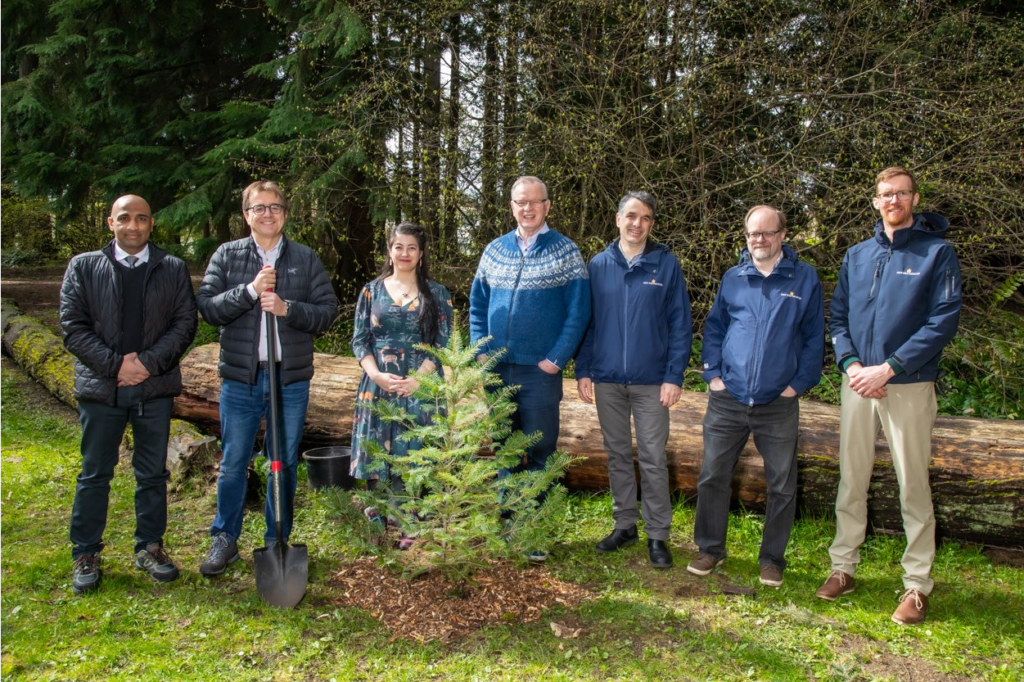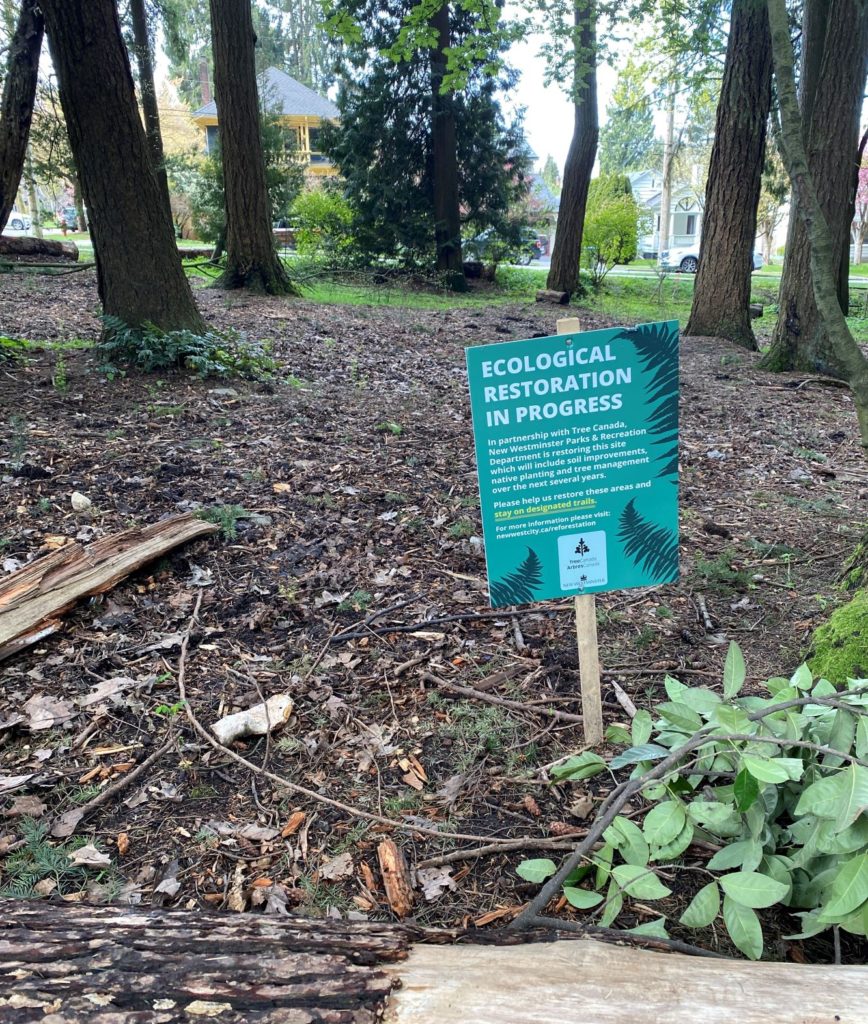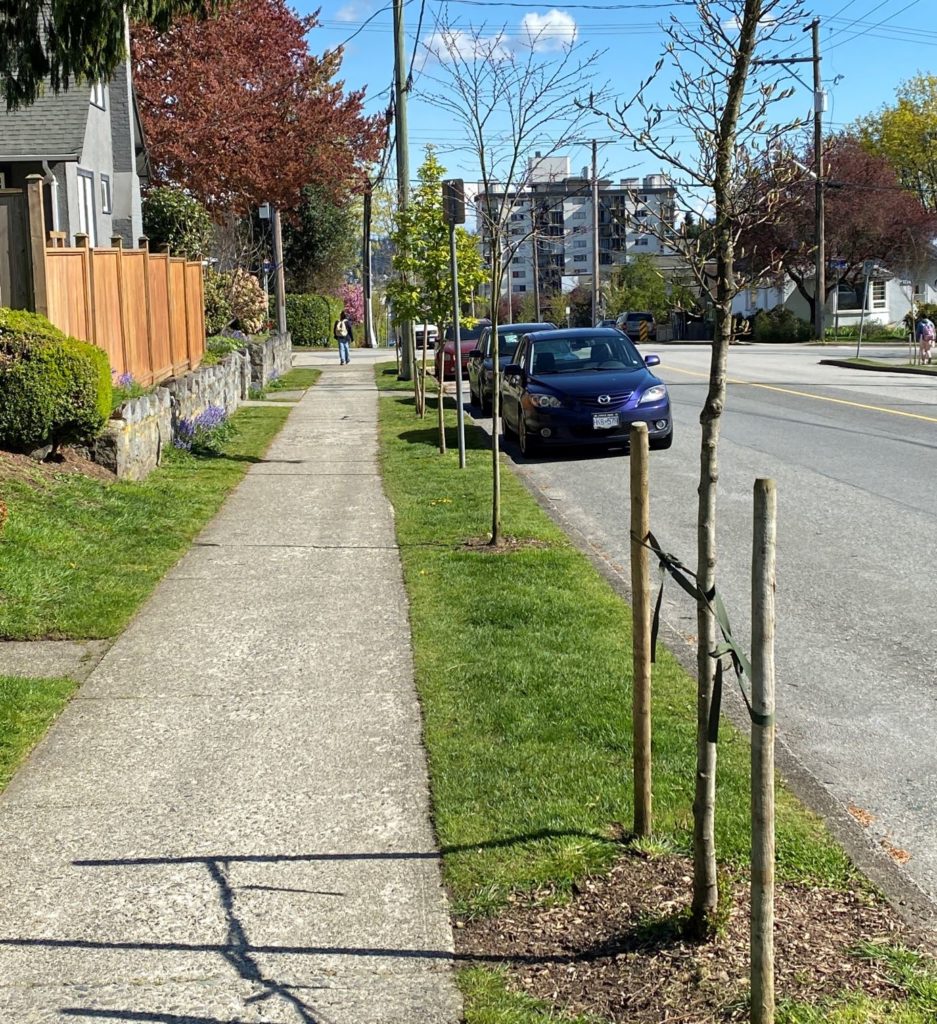In the zeitgeist of these times, one’s opinion about a day celebrating the intrinsic value of the planet that sustains us is probably influenced by the flavour of political leadership you prefer. But one thing that seems to bridge all political divides is the idea that trees are good things. That having more trees is better than having fewer trees. That we want to live near them and have them live near us.
So I want to mark Earth Day 2022 talking about trees.

We had a little event in Queens Park today, where Acting Mayor Nakagawa, the federal Minister of Natural Resources and the provincial Minister of Energy, Mines, and Low Carbon Innovation celebrated new trees in an established forest (more about why that is important below), and it gives me an excuse to talk about optimistic leadership.
The proverb is that the best time to plant a tree is 20 years ago, and the second best time is today. There is nothing more hopeful and optimistic than planting a tree. We know the benefits of the tree will not be enjoyed today, that the shade of the tree will not be provided for a decade or more. It takes years for the full noise-abatement, flood-prevention, air-cleaning, habitat-restoring, fruit-providing, carbon-sequestering values of a tree to be realized. The planning here is well outside of any election cycle. So it is an expression of hope to commit to, to fund, to plant a tree you may never sit in the shade of.
In New Westminster, we are planting trees like never before. Literally thousands of them. Our Urban Forest Management Strategy is in the rapidly-getting-trees-planted stage. Concentrating first on currently under-shaded neighbourhoods like the Brow of the Hill and Queensborough, the City is protecting established trees on public and private property, requiring new plantings on development lands, and (most importantly) planting new trees on City-owned lands, including parks and boulevards.
The reason we had Ministers in Queen’s Park on Earth Day in 2022 was around two great programs happening right now. Both are supporting our Urban Forest Management Strategy, and both are supported by valuable external grants we were able to secure to make New Westminster (literally) greener specifically because we have these clear strategies and goals.
The first is our program to restore natural areas in our parks with native plantings, supported by the Tree Canada National Greening Program. Through that program, we got assistance to support the restoration of the ground level of some of our established forests, such as in Hume, Glenbrook Ravine, and Queens Park. These are areas where the tree canopy is well established, but old. These “single generation” forests are majestic, but when the trees are not diverse and are all the same age, they become susceptible to disease, and are not buffered for natural secession. By changing the ground-level conditions and introducing both young trees and other ground-cover, we build a more robust and healthy forest. This makes the big trees healthier, and assures that we will have younger established trees to fill gaps when older trees naturally age out of the forest. This program will see 25,000 saplings and plant plugs put in the soil in 2022!
You may have noted the signage around Queens Park where these areas are being restored. The signage is there to help people understand why we are asking people to not walk or ride their bikes through these area, and to keep your dogs out of there, so the new plants and restored soil can do its thing:
The second program is a more city-wide Urban Reforestation and Biodiversity Enhancement Initiative. This is the result of a $1.7 Million grant from the (federal) Investing in Canada Infrastructure Program and (provincial) COVID-19 Resilience Infrastructure Stream (ICIP – CVRIS) grant programs. This is going to fund a huge amount of our target tree planting for 2022 and 2023, and allow us to establish a new 1-hectare pollinator pasture in the City.
We are on pace, thanks in part of these types of grants, to beat our target for 10,000 established new trees in the City by 2030. We know this is not the complete solution for climate disruption, but along with our ongoing efforts to reduce our corporate and community GHG emissions, we recognize that sequestration through trees will become an increasingly important part of reducing atmospheric GHG. At the same time, they make our community a more livable place. If we maintain the momentum of the last couple of years, we will exceed out Urban Forest Management Strategy target of 27% forest canopy cover by 2035, and this will be a completely transformed City by 2050.

There are ways you can help out! As important as they are to our long-term goals, new boulevard trees do not, unfortunately, have a 100% survival rate. The boulevard is a tough place to be a young tree. There often isn’t a lot of soil to hold water over dry summers, dogs pee on you, things bump into you, and there is little protection from wind, hard sun, and other indignities. We plan for some attrition with new plantings, but you can help reduce that rate and increase the chances that the lovely new tree near your home joins the ranks of the established. You can become a Tree Steward by signing up to Adopt a Street Tree! See the details here.
This can be your non-partisan Earth Day gift to the planet that sustains us, and to a generation you have not yet met who will enjoy the shade your tree provides in the decades ahead. Happy Earth Day.